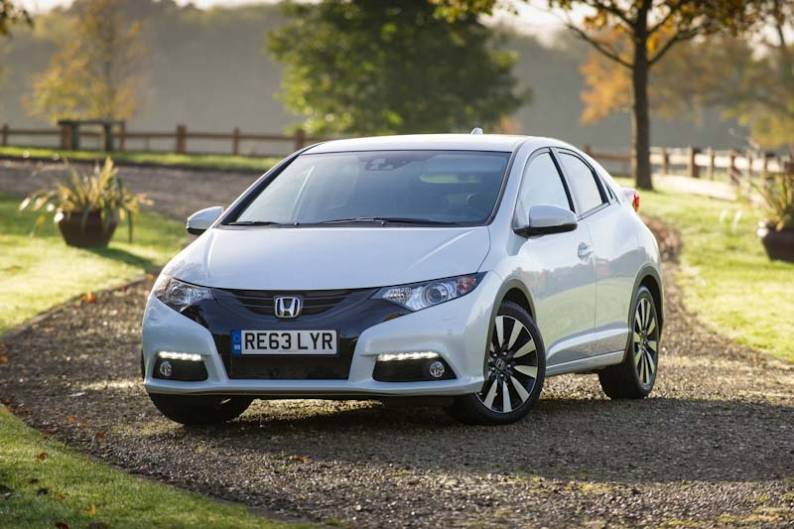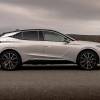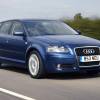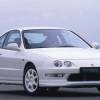
RAC sale – up to 33% off*
• Roadside cover from £5.29 a month†
• We get to most breakdowns in 60 mins or less
• Our patrols fix 4/5 breakdowns on the spot

By Andy Enright
Introduction
Every once in a while, Honda wheels out something that knocks you flat, which absolutely has you wondering why they don't reach those peaks more often. Their motorcycle division manages it on a fairly regular basis, but passenger cars? That's a bit more sporadic. For every NSX, Integra Type R, that first CR-V or the eighth-generation Civic, there are long periods where the company brings us puzzlingly mediocre stuff.
For a while it looked as if the ninth-generation Civic was going to fall into that latter bracket. There was no wow about it, nothing that would really compel you to choose one over, say, a Hyundai i30 or a Mazda3. That all changed with the introduction of the 1.6 i-DTEC diesel engine. All of a sudden, if you wanted the very best engine in the whole family hatch division, you bought a Civic. Here's what to look for when buying used.
Models
5-door family hatch, five-door estate [(1.6 diesel) S, SE, SE Plus, SR, EX Plus, Black edition]
History
It probably won't have escaped your attention that the Japanese in general and Honda in particular don't have a stellar track record when it comes to small, efficient diesel engines. For years, Honda persevered with the doomed philosophy that its VTEC petrol engines were the way forward, but the steady growth of diesel sales not just in the heartland of Europe, but also latterly in American and Asian markets made the company bow to the inevitable truth. It needed to get with the program.
Before 2002, Honda didn't even have a diesel engine anywhere in its range. At that point, they introduced a 1.7-litre Isuzu-sourced diesel that was so terrible, it seemed the engineers had chosen it in a fit of pique to show how woeful black pump-fueled engines were. Fast-forward to 2013 and better diesels were more prevalent across the Japanese brand's model line-up. Indeed, the 2.2-litre 'N-Series' unit fitted to the ninth generation Civic family hatch wasn't a bad powerplant at all, torquey and relatively refined. It wasn't the right engine for a Focus-sized model in this segment though, too large in size, with economy and efficiency numbers that as time went on increasingly looked out of step with the market.
Honda reacted by introducing the engine we're looking at here, a 1.6-litre i-DTEC diesel powerplant that instantly catapulted the brand from also-ran to genuine contender in a number of market sectors. This unit instantly became the best-selling engine for European customers. At the start of 2014 when the Civic Tourer estate model appeared, its range was fundamentally built around this 1.6 i-DTEC diesel. And the unit was used for both bodystyles with a popular Civic 'Black' special edition variant that launched in July 2014. This engine's use continued to be widespread in the facelifted ninth generation Civic line-up that was introduced in the Spring of 2015.
What You Pay (used_pay)
What You Get
If having weighed up all the options, you conclude that it is a Civic of this kind that you really want, then you're going to be hoping that this car's price positioning towards the top of its segment will deliver you plenty in terms of standard equipment. Sure enough, across the range, you'll find features like 16-inch alloy wheels, roof rails, a DAB digital radio with eight speakers, Bluetooth and clever flip-up 'Magic' seats, as well as more expected items like daytime running lights, power heated mirrors, a USB input and auxiliary jack and headlights that stay on to see you to your front door.
The real niceties of course are reserved for plusher variants - front fog lights, auto headlamps and wipers, front and rear parking sensors, a parking camera and the clever Adaptive Damping System you'll really want to realise the full dynamic repertoire of this car. Popular options you'll find fitted to many models will include satellite navigation, a roof-mounted cycle carrier, a dog guard and a 430-litre ski box. A few original buyers also specified wheels of up to 18-inch diameter - but that carried with it a cost in terms of ride quality.
As for safety, a five star Euro NCAP showing is justified by the usual twin front, side and curtain airbags - though no knee 'bag is included. Plus you get all kinds of electronic acronyms to hopefully ensure that you'll never have to use them. There's Vehicle Stability Assist, as well as ABS with emergency braking assist to aid in panic stops advertised to following motorists by automatically activating brake and hazard warning lights.
As for practicality, well if you go for the Civic Tourer estate model, you'll find that the interior boot floor has been raised compared to the hatchback to create a completely flat area when the seats are folded down. As with the hatch, the rear seat cushions can also be flipped up in this variant to reveal ample floor space for carrying tall objects. A 60:40 split in the seat base offers even more options for carrying both people and cargo and provides an alternative load area if access via the tailgate is limited. With the Tourer, you get 624 cubic litres of boot volume with the rear seats in place and up to 1668-litres when they're folded. There is also a very handy hidden compartment perfect for storing the tonneau cover when it is not needed. Furthermore, there is additional under floor storage in the boot which makes carrying tall objects in the boot easy, plus the height of the loading lip has been reduced by 137mm compared to the Civic hatchback. It's all been very well thought through.
What You Pay
Please fill in the form here for an exact up-to-date information.
What to Look For
Not a lot goes wrong with the ninth-generation Civic. Buyers are, on the whole, a contented lot if customer satisfaction surveys are anything to go by. What's more, Honda has delivered on promises. Based on real-world MPG figures submitted by thousands of drivers to the Honest John Real MPG website, the Civic 1.6 i-DTEC took the top accolade in 2014, based on an average score of 66.2mpg.
When looking at a used Civic, make sure the electronics work as they should, with electric windows occasionally going on the fritz. Rear brakes have been an issue, as the car can chew through brake pads in around 25,000 miles. There have also been reports of vibrating trim panels.
Replacement Parts
(based on a 2013 5-door 1.6 i-DTEC - ex VAT): You'll need to budget around £315 for a full exhaust system (excluding catalyst), while a clutch assembly is around £200. Front and rear brake pads are around £55 and £50 respectively per set. A starter motor is £240, a radiator around £150, and an alternator around £275.
On the Road
In the past, Honda has sold cars with diesel engines about as willingly and satisfyingly as McDonalds will sell you a salad - but this one's different. True, it's no ball of fire (62mph takes 10.1s on the way to 120mph), but more importantly, there's nearly twice as much pulling power as the alternative 1.8-litre i-VTEC petrol variant can offer - 300Nm from this diesel - which makes the car feel a lot more willing than those figures might suggest, as well as facilitating a 1,400kg braked towing weight.
As with the petrol Civic, the engine in this one sits crossways under the bonnet and drives the front wheels through a standard six-speed manual gearbox. Unlike the petrol unit though, it's a powerplant that seems to have been properly tuned to suit the character of the car, feeling happiest when simply surfing along at modest speeds leaving plenty in reserve. There's little of the harshness and vibration you often get from other small diesels when pulling away, even if you're in a gear higher than perhaps you ought to be. Nor is there any need to bother pushing it much past 3,500 revs because it's done its best work by then. Instead plug it into the next gear and take a moment to appreciate the noise reduction work that Honda has put into all Civic models in recent times.
There's extra insulation in the rear wheel arches, roof and engine bay, better door seals all round and thicker front side windows. The result is refinement markedly better than original versions of this eight generation Civic could provide, with unpleasant frequencies of engine, tyre and wind noise filtered out far more effectively. You don't even get the boominess from the loadbay at speed that most other small estates exhibit. This car is, in short, a very careful feat of engineering.
Overall
The ninth generation Civic took a while to come good. The big step forward came with the introduction of variants fitted with this 1.6-litre i-DTEC diesel engine, a unit which transformed this car's chances. Choose one in a decent trim level and you'll have a Honda that drives brilliantly, offers stellar economy and efficiency figures, is safe, spacious, reliable and still looks smart. You really can't ask for much more from a used car. The only caveat is that it's not cheap. As ever though, you get what you pay for.







![Ford Focus 1.0 EcoBoost [MK3] [C346] (2012 - 2014) used car review](https://d1ix0byejyn2u7.cloudfront.net/drive/images/made/drive/images/remote/https_d2yv47kjv2gmpz.cloudfront.net/filestore/0/4/1/1_0f4bec29084aa46/17bf786c37cfc8414868eb6dabc01447/1140_b17a123fad7f180_100_100_70_c1_c_c.jpg)